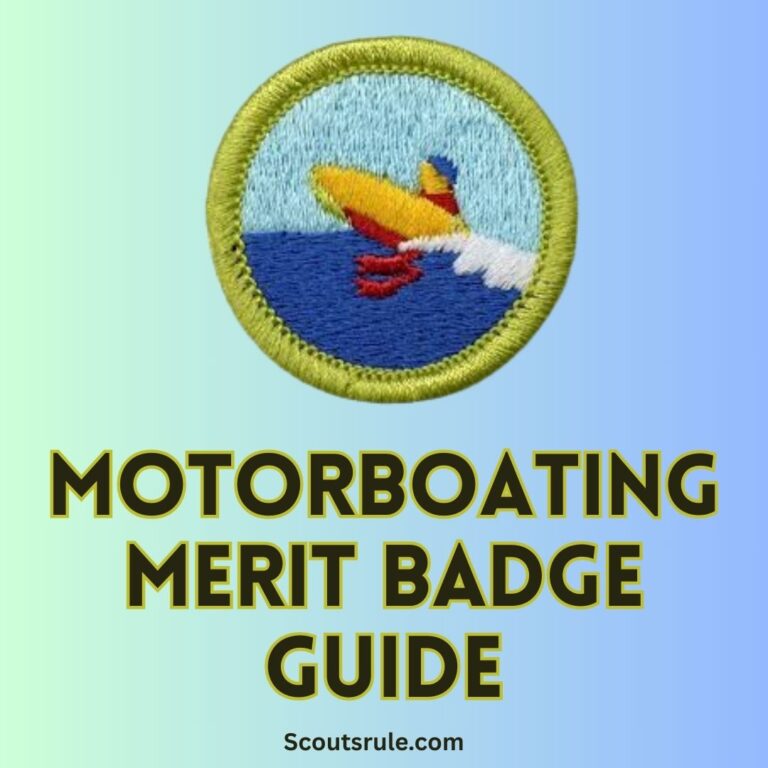
This guide is designed to help Scouts explore the fascinating and dynamic world of animal science—from learning about livestock breeds and their uses, studying common animal diseases and prevention methods, and understanding differences in animal physiology, to developing sound management practices and exploring related careers. Whether you are interested in farm animals, wildlife, or pursuing a future in veterinary science and agricultural innovation, this guide will walk you through each requirement, provide practical project ideas, and offer insights into how animal science plays a critical role in our communities and economies.
Post Contents
- Introduction: A World of Animal Science
- 2. The Purpose and Significance of the Animal Science Merit Badge
- 3. Overview of the Merit Badge Requirements
- 4. Requirement 1: Recognizing Livestock Breeds
- 5. Requirement 2: Animal Diseases – Identification, Symptoms, and Prevention
- 6. Requirement 3: Digestive Systems and Nutritional Management
- 7. Requirement 4: Managing a Selected Animal Type
- 8. Integrating Research and Field Experiences
- 9. Exploring Career Opportunities in Animal Science
- Conclusion: Applying Animal Science in Everyday Life and Beyond
Introduction: A World of Animal Science
From the majestic horses that once pulled plows and carriage wheels to the modern dairy cows that provide nutritious milk and the diverse types of poultry that grace our farms, animal science is a broad field that impacts every aspect of our lives. The Animal Science Merit Badge invites Scouts to delve into this broad discipline by providing a hands-on, comprehensive study of various animal breeds, health management, and livestock care practices. This badge is not only about memorizing facts; it is about learning to observe critically, appreciate the biological and cultural significance of animals, and develop practical skills that are useful in everyday life, on the farm, or even in a future career in the agricultural or veterinary fields.
By obtaining this merit badge, you will gain insight into the common practices used by farmers and animal scientists, explore the challenges of animal welfare, and even discover the many ways in which animal science contributes to the economy and quality of life in communities worldwide. Whether you’re caring for a small pet, visiting a farm, or dreaming of a future in animal care professions, the knowledge you build here is a foundation for understanding how humans and animals interact within complex environments.
2. The Purpose and Significance of the Animal Science Merit Badge
The Animal Science Merit Badge is designed with several key objectives in mind:
- Educational Growth: Learn fundamental concepts in animal agriculture, including how to identify animal breeds, understand animal physiology and nutrition, and appreciate the complexities of animal management.
- Practical Knowledge: Gain hands-on skills in record-keeping, research, and animal care. You will explore methods for supervising feeding, housing, disease prevention, and waste management.
- Community and Economic Impact: Understand how animal science supports local and national economies through jobs, food production, and innovations in agricultural practices.
- Career Exploration: Discover potential career paths in veterinary science, animal husbandry, agricultural research, and wildlife management. This badge provides a gateway to learning about various professional roles that contribute to animal and public health.
- Civic Responsibility: By learning to care for animals and understanding the ethical considerations involved, you also cultivate a sense of responsibility and empathy for living creatures, reinforcing values that are integral to Scouting.
These objectives are not isolated topics; they interrelate to form a comprehensive understanding of animal science as both a traditional craft and a critical modern discipline.
3. Overview of the Merit Badge Requirements
While the exact wording of requirements may change with time, the core elements of the Animal Science Merit Badge typically include the following:
- Livestock Breeds: List and describe at least four breeds of livestock in each of several classifications (such as horses, dairy cattle, beef cattle, sheep, hogs, poultry, and goats). For each breed, you must discuss its principal uses and merits and provide information on its origin.
- Common Diseases: List five diseases that afflict animals in each classification (and for poultry, a separate list) and describe the symptoms, methods of transmission, and techniques for preventing these diseases. This portion also requires choosing additional items from a provided list.
- Digestive Systems and Nutritional Management: Explain the differences in the digestive systems among ruminants, horses, pigs, and poultry, and discuss how these differences affect their nutritional management.
- Animal Management: Pick one type of animal (for example, a beef cow, dairy cow, horse, sheep, goat, hog, or even a poultry flock) and develop a comprehensive management plan. This plan should include nutritional concerns, housing, disease prevention, waste control/removal, breeding programs, and biosecurity measures.
- Practical Applications: Document your personal experiences, research observations, and any field visits related to animal science. Your documentation may include interviews, field photographs, and written reports.
These requirements integrate research, critical thinking, and practical application in a way that demonstrates both academic understanding and hands-on abilities. Now, let’s break down each component in detail.
4. Requirement 1: Recognizing Livestock Breeds
One of the core tasks in the Animal Science Merit Badge is to learn about and document different livestock breeds. This requirement serves to familiarize you with the diversity of animals that are integral to agriculture.
4.1 Understanding the Different Classifications
You will be expected to list four breeds for each of the following classifications:
- Horses: Identify four breeds, describing each breed’s typical uses (such as racing, work, riding, or show) and highlighting distinctive merits, such as temperament, strength, speed, or beauty. Also, include information about the geographic origin of each breed.
- Dairy Cattle: Dairy cattle are bred primarily for milk production. For each of the four selected breeds, note their milk yield, quality of milk (such as fat content), and any known advantages or disadvantages related to disease resistance or adaptability.
- Beef Cattle: Beef cattle are raised specifically for meat production. For each breed, discuss traits such as growth rate, meat quality, and resilience in various climates.
- Sheep: List four sheep breeds, which may be used for both meat and wool production. Compare their productivity, wool quality, ease of management, and adaptability to different climates.
- Hogs: Hogs are raised for pork production. Choose four breeds and discuss their growth characteristics, meat quality, and overall efficiency of production.
- Poultry: Poultry includes chickens, turkeys, and other birds kept for eggs or meat. For your list, detail the differences in production capabilities, temperament, and adaptability of each breed chosen.
- Goats: Goats are versatile animals raised for milk, meat, and fiber. For each breed, explain its primary use, profitability, and special traits, such as hardiness or temperament.
4.2 Strategies for Researching Breed Information
- Resources: Use books (such as livestock breed encyclopedias), reputable websites (including those from agricultural extension services), and interviews with local farmers or animal science departments.
- Documentation: Create detailed notes and charts that capture each breed’s uses, merits, and origins. These records not only help you meet the requirement but also serve as a reference for later sections of the badge.
By completing this task, you gain a thorough understanding of the diversity and specialization within animal agriculture, reflecting on how different breeds are suited to meet various agricultural needs.
5. Requirement 2: Animal Diseases – Identification, Symptoms, and Prevention
Understanding diseases that affect livestock is critical for ensuring their welfare and productivity. This requirement challenges you to learn the causes, symptoms, and preventive measures related to various animal diseases.
5.1 Diseases Affecting Livestock and Poultry
For each classification of animal (horses, dairy cattle, beef cattle, sheep, hogs, and poultry), you need to list at least five diseases. For instance:
- Examples of Livestock Diseases:
- In Cattle: Diseases might include mastitis, bovine respiratory disease, foot-and-mouth disease, bovine spongiform encephalopathy (BSE), and ringworm.
- In Sheep: Conditions may include ovine foot rot, sheep scab (mange), bloat, pneumonia, and clostridial diseases.
- In Hogs: Common issues include swine flu (influenza), porcine circovirus, salmonellosis, edema disease, and progressive atrophic rhinitis.
- In Horses: Consider diseases such as equine influenza, strangles, equine viral arteritis, laminitis, and equine piroplasmosis.
- Poultry Diseases: List five diseases specifically affecting poultry, such as avian influenza, Newcastle disease, fowl cholera, Marek’s disease, and infectious bronchitis.
5.2 Describing Symptoms, Transmission, and Prevention
For each disease you list, you must provide:
- Symptoms: Detailed physical and behavioral signs indicating the disease. For example, mastitis in dairy cattle typically causes swelling, pain, and changes in milk appearance.
- Modes of Transmission: Explain how each disease is contracted—whether through direct contact, airborne pathogens, contaminated feed or water, or vector-borne mechanisms.
- Preventive Measures: Outline what practices (such as vaccination, sanitation, proper nutrition, and isolation procedures) can help prevent these diseases.
Discussing these aspects allows you to appreciate the complex challenges faced in animal husbandry and the importance of integrated management strategies in preventing outbreaks.
6. Requirement 3: Digestive Systems and Nutritional Management
Different animals have evolved unique digestive systems that are intricately linked to their feeding habits and nutritional requirements. This requirement requires you to:
6.1 Comparing Ruminants vs. Non-Ruminants
- Ruminants: Ruminants (like dairy cattle, beef cattle, sheep, and goats) have a specialized stomach comprised of multiple compartments (rumen, reticulum, omasum, and abomasum) that allow them to break down fibrous plant material through fermentation. Their digestive systems are well suited for diets high in cellulose, and they require a different nutritional management plan than non-ruminants.
- Horses: Although not ruminants, horses are hindgut fermenters. They digest fibrous materials primarily in the cecum and colon rather than in a multi-chambered stomach.
- Pigs and Poultry: These animals have simpler digestive systems. Pigs, for example, are monogastric (with one-chambered stomach), and their nutritional management requires higher-quality, easily digestible feeds. Poultry’s digestive systems are adapted to digesting grains and seeds quickly, leading to different supplementation needs to support their rapid growth.
6.2 Impact on Nutritional Management
- Feeding Strategies: Address how ruminants require diets enriched with fiber and specific supplements like minerals and vitamins to optimize rumen function, whereas non-ruminants might need diets higher in proteins and balanced carbohydrates.
- Nutritional Programs: Explain how these differences impact the planning of feeding programs, choice of feeds, and management practices. Consider discussing how stress or poor-quality feed can exacerbate digestive disorders.
By examining these differences, you learn the importance of targeted nutritional management and gain insights into designing feeding programs that promote optimal animal health and productivity.
7. Requirement 4: Managing a Selected Animal Type
Select one type of animal—be it a beef cow, dairy cow, horse, sheep, goat, hog, or a poultry flock—and develop a comprehensive management plan. This requirement is often the most practical and integrative part of the badge.
7.1 Planning and Documenting Nutritional Concerns
- Dietary Management: Outline the specific nutritional needs of your chosen species. Explain what the ideal diet consists of, how often the animal should be fed, and any special supplements necessary.
- Daily Feeding and Monitoring: Describe routines for feeding, monitoring weight and health, and adjusting the diet as the animal grows or changes.
7.2 Housing, Disease Prevention, Waste Control, and Biosecurity
Your management plan should be well-rounded and carefully documented:
- Housing: Describe the ideal housing conditions that provide both comfort and protection from the elements. Discuss space requirements, ventilation, and sanitation.
- Disease Prevention: Include plans for vaccination, health monitoring, and quarantine procedures for new or sick animals.
- Waste Control/Removal: Discuss methods for handling animal waste, including composting or safe disposal techniques that minimize environmental impact.
- Breeding Programs: If applicable, outline a responsible breeding strategy that maintains genetic diversity and enhances desirable characteristics.
- Biosecurity: Explain measures to prevent the transmission of diseases between animals. This might involve protocols for visitor access, sanitation practices, and the separation of animals by health status.
Create a detailed written plan that integrates all these components. You may also include diagrams or flow charts to demonstrate how your management system works. Be sure to document your research findings, interview local farmers or veterinarians if possible, and refine your plan based on feedback.
8. Integrating Research and Field Experiences
One of the strengths of the Animal Science Merit Badge is that it relies on both in-depth classroom-style research and practical field experiences. You should:
- Visit Farms or Agricultural Facilities: With appropriate permission, visit local farms, animal shelters, or university agricultural departments. Observe the management practices in place and ask questions about the nutritional, housing, and disease prevention methods they use.
- Interview Experts: Speak with veterinarians, animal scientists, or local farmers. Their firsthand expertise can provide insights that enrich your understanding of animal science beyond what you read in books.
- Document Your Experiences: Keep a journal or record of your field visits, including photographs, notes, or sketches that capture the practices you see in action. These experiences provide practical context to the theoretical knowledge you acquire.
This integration of research and real-world observation will be a key component of your final presentation to your merit badge counselor.
9. Exploring Career Opportunities in Animal Science
The Animal Science Merit Badge also offers an opportunity to explore careers that are connected with animal care and agriculture. Consider the following pathways:
- Animal Husbandry and Farm Management: Professionals in this area are responsible for planning and overseeing the care of livestock on farms. They focus on improving feed efficiency, welfare, and productivity.
- Veterinary Medicine: Veterinarians diagnose and treat animal diseases, contribute to improving animal welfare, and help in public health efforts by managing zoonotic diseases.
- Animal Science Research: Researchers study animal genetics, behavior, nutrition, and disease prevention, contributing to the scientific advancement of agriculture.
- Wildlife Biology and Conservation: Careers in conservation focus on the protection of native species and ecosystems, including managing wildlife populations and preserving their habitats.
- Agricultural Extension and Education: These professionals work with farmers to disseminate new knowledge, improve farming practices, and promote sustainable agriculture.
Engage in interviews or shadowing experiences with professionals in one or more of these fields if possible. Prepare a summary report or presentation that outlines your findings, detailing required education, daily responsibilities, challenges, and rewards. Reflect on how your interests and skills might lead you toward one of these career paths.
Conclusion: Applying Animal Science in Everyday Life and Beyond
The Animal Science Merit Badge is much more than an academic exercise—it is an immersive journey that connects you to the living world around you. Through learning about different livestock breeds and their roles, studying the diseases and digestive systems of animals, and developing a comprehensive management plan, you gain deep, practical insights into the realm of animal science. You learn not only how to keep animals healthy and productive but also how important animal care is to our economy, society, and environment.
As you complete each requirement, you are building a wealth of knowledge that will benefit you in countless ways. Whether it’s through improved care for pets, enhanced understanding of sustainable agriculture, or even the inspiration to pursue a career in animal science or veterinary medicine, the skills and insights you develop are lasting and significant.
By integrating field experiences, careful research, and active learning, you develop a true appreciation for how the welfare of animals is interwoven with human well-being. Your work in this merit badge demonstrates that effective animal management—whether on a farm, in a laboratory, or within urban communities—relies on detailed observation, thoughtful planning, and proactive care.
May your studies and experiences in animal science inspire you to be a responsible steward of the natural world, a creative problem-solver in addressing real-life challenges, and a lifelong learner who appreciates the deep connections between animals, humans, and the environment. Embrace the challenges, celebrate your successes, and let the knowledge you gain guide you to make informed, compassionate decisions about animal care and management in the future.
Good luck on your journey, and may the lessons of the Animal Science Merit Badge enrich your life and open up new opportunities for growth, service, and exploration.

Hi, Robin here, A former lead Scout and here I share my inspiring stories about USA Scouts, leadership, adventure, how to guides and more.






